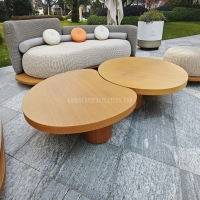Welcome to the website for landscape facilities products and knowledge.
What are the most effective ways to address concerns about the table’s compatibility with other furniture?
When introducing a new table into your living space, ensuring it complements your existing furniture is crucial for achieving a cohesive and aesthetically pleasing environment. Many homeowners struggle with mixing different furniture styles, periods, and materials while maintaining visual harmony. The most effective approach begins with identifying common design elements that can bridge your table with other pieces.
Start by analyzing the dominant design lines in your space. If your current furniture features primarily curved silhouettes, select a table with similar flowing lines rather than sharp angles. Conversely, if your room contains mostly rectangular pieces, a table with clean, straight edges will integrate more seamlessly. This principle of matching design vocabulary creates an immediate visual connection between pieces.
Color coordination presents another powerful compatibility strategy. You don't need matching wood stains – in fact, varying tones often create more depth. Instead, identify undertones. Warm-toned woods like oak, cherry, and walnut typically harmonize well together, as do cool-toned woods like ash, maple, and painted pieces. For mixed material tables featuring metal or glass, echo these materials elsewhere in the room through light fixtures, hardware, or decorative objects.
Consider proportional relationships between your table and surrounding furniture. A substantial dining table requires appropriately scaled chairs, while an oversized coffee table needs a sufficiently large sofa to avoid visual imbalance. Leave adequate circulation space – generally 30-36 inches between furniture pieces – to prevent a cramped appearance that undermines compatibility.
Leg style and base design significantly impact how a table relates to other pieces. Tables with similar leg profiles to your existing chairs or case goods create subtle repetition that ties the space together. Alternatively, choose a table with a completely different base style but similar material to establish both contrast and connection.
Finally, employ transitional elements to bridge stylistic gaps. Area rugs can anchor disparate pieces, while consistent hardware finishes throughout the space create continuity. Decorative accessories like throw pillows, artwork, and lighting fixtures that incorporate colors or materials from both your table and existing furniture will further enhance compatibility, resulting in a thoughtfully curated space where every piece appears intentionally chosen to belong together.
Related search:

Recommendation
Elliptical metal outdoor table with nested design, resembling wood grain, round table